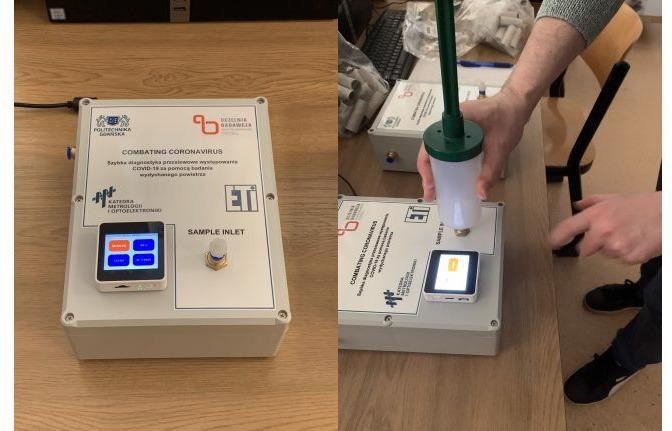Volatile organic compounds (VOCs) are released as gases from specific solids or liquids and contain a range of chemicals. Several such chemicals are related to various harmful human health effects, ranging from from eye, nose and throat irritation to the damage of kidney, liver and central nervous system.
 In Review of Scientific Instruments, researchers at Gdańsk University of Technology describe a measurement device designed to analyze air samples containing various volatile organic compounds. Image Credit: Kwiatkowski, Drozdowska, and Smulko.
In Review of Scientific Instruments, researchers at Gdańsk University of Technology describe a measurement device designed to analyze air samples containing various volatile organic compounds. Image Credit: Kwiatkowski, Drozdowska, and Smulko.
In many practical applications, varying from detecting indoor air quality to screening patients for ailments, the potential for simple, fast and reliable detection VOCs in air samples is highly useful.
In the journal Review of Scientific Instruments, from AIP Publishing, scientists from the Gdańsk University of Technology, in Poland, demonstrate a measurement device developed to examine air samples that contain several VOCs.
According to researcher Andrzej Kwiatkowski, the setup “utilizes commercial and prototype resistive gas sensors of low-energy consumption to detect volatile organic compounds, such as methane, ethanol, toluene, methylene, nitrogen dioxide, formaldehyde, ammonia, among others, in air samples.”
The sensors change their resistance in the presence of VOCs, which exist in the environment and exhaled breath.
Andrzej Kwiatkowski, Researcher, Gdańsk University of Technology
Once environmental conditions such as air pressure, temperature and humidity are tracked, the device inhales an air sample, either from the air or from a breath sample, allowing the sensors inside its 220-mL aluminum gas chamber to examine and react to the detection of VOCs in real situations.
The device includes an electrical micropump, a set of electrical valves and a gas chamber. It is controlled by a touch-screen electronic module that helps to process and save data. Responses of the sensor are recorded and can be parameterized for additional data processing with the help of numerous detection algorithms.
The device has the potential to detect and quantify the existence of VOCs in practical applications in just 10 minutes.
The setup is a low-cost device of simplified maintenance and service. Additional environmental sensors boost the accuracy of gas sensing by correcting effects induced by temperature and humidity changes. The device can monitor the air quality collected in a human environment, such as in an office or warehouse, to detect molds or bacteria by emitted smells.
Janusz Marek Smulko, Study Co-Author, Gdańsk University of Technology
“In medical applications, doctors can investigate the exhaled breath of patients by this noninvasive method to signal the need for a more detailed checkup,” added Smulko.
At present, the device is used in hospital studies to find the difference in the exhaled breath between COVID-19 patients and healthy volunteers.
Journal Reference:
Kwiatkowskia, A., et al. (2021) Embedded gas sensing setup for air samples analysis. Review of Scientific Instruments. doi.org/10.1063/5.0050445.
Source: https://www.aip.org/